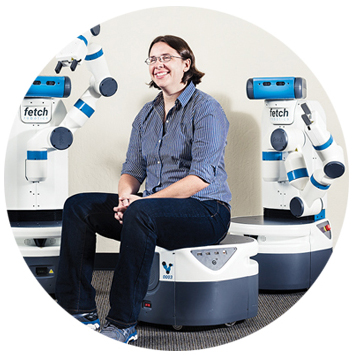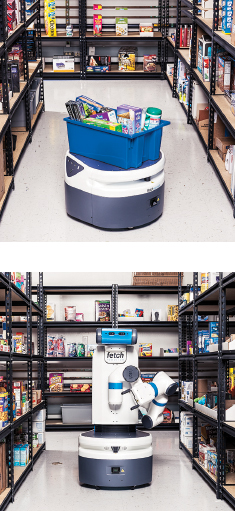
Melonee Wise imagines that all homes will have autonomous robots—something like The Jetsons’ Rosie the robot maid, minus the apron and Brooklyn accent. Just one problem: Wise, chief executive of the year-old startup Fetch Robotics, thinks it won’t happen in her lifetime, because the challenges in hardware and software are too big. “I’m probably one of the most pessimistic roboticists you’ll ever meet,” she admits.

Nonetheless, Wise still thinks smaller and more powerful computers, affordable sensors, more adept machine vision, and better artificial intelligence are coming together to make robots capable of a wide range of tasks—if not yet all in a single machine. That’s why Fetch Robotics is going after one promising area: warehouses and e-commerce fulfillment centers, which are plagued with high turnover, injuries, employee theft, and a chronic shortage of workers, who, of course, also have a biological need to sleep.
Although dedicated robots are common in giant distribution centers (see “Inside Amazon”), Wise thinks there’s a bigger market for more flexible “mobile manipulation” robots that can help smaller companies ease into automation. In a simulated warehouse set up in a corner of Fetch’s San Jose headquarters, a knee-high, cylindrical rolling robot called Freight smoothly follows Wise like a very attentive dog as she picks up boxes of crackers and cereal from shelves. She drops them in a plastic crate atop the robot, and when she’s done with the fake order, it zips off to a mock shipping area.
Another robot, Fetch, is intended not to aid but to replace warehouse workers. It has one jointed arm with a gripper on the end, along with a “head” that uses a depth camera similar to a Microsoft Kinect game controller, so it can identify and pluck items from a shelf and place them in Freight’s crate. Both robots are taught to navigate by leading them around the warehouse to create a map. They’re even trained to recognize people’s legs, so they can follow particular individuals. Unlike some robots that navigate using radio beacons or bar codes on the floor, Fetch’s robots use 3-D laser scanners to get around and avoid obstacles, expected or otherwise.
Wise won’t disclose the exact price of Fetch robots, but she says they will be in the tens of thousands—much less than the cost of an employee. The company has sold some of its initial run of 40 robots to unnamed pilot customers, with plans for a much larger run if the automated workers can do the job.
—Robert D. Hof
Watch this Innovator at EmTech 2015
Meet the Innovators Under 35
